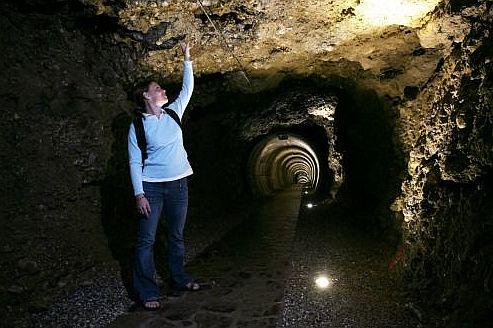
Kranj, the historical capital of Slovenia’s Gorenjska region, is known for its medieval architecture and its location below the Alps, but its newest tourist attraction lies far beneath the town’s streets.
Kranj’s mysterious network of tunnels has its origins in the tense days before the outbreak of World War II. That’s when local authorities decided to build a network of underground passages that would protect the townsfolk from a possible aerial attack. In the event, the Axis powers occupied Yugoslavia within days in 1941, the town was spared a bombing raid, and the tunnel-digging project was stopped – but not for long. It was restarted in 1944 when Germany began to lose the war, and the authorities feared that Kranj could face bombing by the Allies. In all, 1.3 kilometers of tunnels were built; on several occasions before the war ended, they were used by the people of Kranj when air raids signaled an imminent attack.
The project was never completed, however, and after the war, the tunnels were abandoned. It wasn’t until the 1980s that a short-lived mushroom farm brought some life back to the subterranean maze. In 1991, local authorities cleaned out some of the remaining tunnels in case they proved necessary as shelters during the country’s’ ten-day War of Independence. In the years that followed, enterprising locals began to consider the tunnels as a potential tourist destination; they restored the rest of the tunnels and opened them up for guided tours.
Visitors can now descent into the depths beneath Kranj twice a week. There, they encounter cave animals that now inhabit the tunnels - from rare species of spiders to cave-dwelling bats. Tour groups can also observe a restored shelter that recreates the conditions faced by Karnj’s inhabitants during World War II or wander through an exhibit of fossils found in the area. They can even see stalactites that are now forming on ceiling of the tunnels as if the man-made structures were natural caves.
Local officials hope to increase the number of visitors even further by organizing regular events such as wine tours and nativity plays in the tunnels. Kranj’s underground world has already proved to be a success, as ever-increasing numbers of visitors from around Slovenia and beyond sign up to explore a part of the town that had long remained hidden from public view.


































































